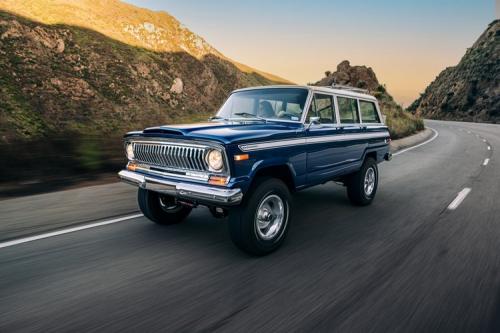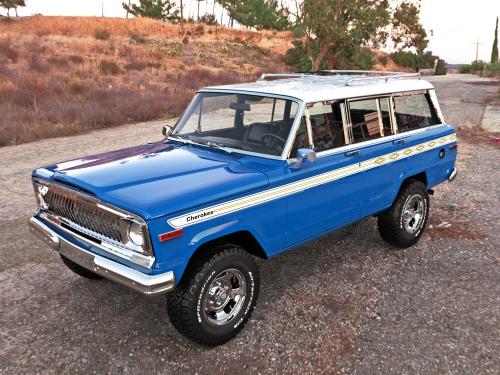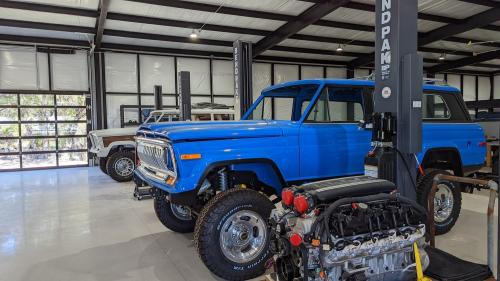Trends and Techniques in Classic Luxury Car Restoration
Over
the years, vintage car sales have seen a steep rise in numbers as a result of
the growing purchasing power of individuals. This has in turn given birth to an
emergent demand for a restoration process. Not only the elite group of society
but also amateur car enthusiasts have shown an increasing interest in the
collection of vintage automobiles and their remodeling.
Vintage
automobiles have become more than just a luxury vehicle for individuals. It's
an emotion and an art that echoes a fine blend of excellent engineering,
opulent design, and a long-running legacy. With the constant shift of different
sectional paradigms of the automobile industry, the classic luxury car
restoration business has also undergone significant transformations.
In
this article, we shall take a brief look into the evolution of vintage luxury
car restoration, with special mention of the key trends and techniques that
have shaped its journey from the past till the present.
1. Early Trends and Techniques
The
classic luxury car first saw the beginning of its restoration in the early
1950s and 1960s. With a determination to preserve the old, the youth and
enthusiast car restorers of that time would imply simple restoration
techniques, which would help them keep their precious travel companions
operational. Classics such as the 1957 Chevrolet Bel Air and the 1965 Mustang
were the very first vehicles to undergo what later would turn out to be a
revolutionary restoration process.
In
those initial infant stages of classic luxury car restoration, the owners of
the vintage models would generally approach DIY techniques and restore their
cars in their garages or courtyards using basic tools and their adapted or
inherent mechanical skills. Individuals put more emphasis on restoring the
vehicles with original parts, which they would painstakingly search for in
their garage dump or frequently salvage parts from donor vehicles. For painting
and coloring, the restorers relied on their eyes and hands and used simple
sanding and brushing techniques.
2. New Techniques and Trends
The
classic car restoration industry saw its first peak in the early 1990s when
more individuals started adding vintage cars to their collections. Many new
emerging technologies were also out during that period, which helped car
restorers attain more desirable outcomes. Specialized tools like paint mixing
systems operated by computers and hydraulic lifts contributed to more precise
work.
With
the rise in restoration projects, the demand for authentic parts also saw a
steep rise. This in turn resulted in the advent of specialized catalogs and
supplier companies who would then provide original car parts that were highly
reliable and more efficient.
As
it's said, "With great power comes great responsibility," similarly
with the classic car restoration industry gaining more stable power, demanding
more responsible technicians who could deliver a more precise result. As a
result, many restorers began to gain formal training and certifications and
started learning the applications of various emerging technologies.
3. The Digital Age
The
period between the 2000s and 2010s saw the most significant paradigm shift in
the classic luxury car restoration history. With highly innovative and
state-of-the-art techniques like 3D painting and CAD (computer-aided design),
the restoration game that existed till then completely transformed.
The
game changer of this restoration period was the emergence of 3D scanning and
printing. This cutting-edge technology allowed the technicians to build elusive
car parts that were either discontinued or couldn't be found easily. Matching
the original shades of pain was another issue, which was mitigated by the
digital paint-matching technology, which allowed restorers to give flawless
finishes to the restoration models.
The
bloom of the internet additionally spiked the rise of online forums, social
media groups, and reputed restoration communities, which offered a plethora of
shared interests and knowledge, which immeasurably helped emerging restorers
gain valuable insights into the classic car restoration industry.
4. Modern Restoration Techniques
With
time, the vintage automobile restoration techniques went through some
significant transformations and evolved into a more structured and
well-established industry. At present, the advancement of technologies, shifts
in individual preferences, and an intriguing interest in preserving the old has
given rise to many modern upgrades that focus on restoring the old models into
modern models like Ferrari, Bugatti, or Porsche while keeping the originality
of the cars untouched.
The
present age has seen the rise of restomods, which constitute modifying classic
cars with modern technology. Restomods models are becoming more popular and are
believed to preserve the legacy of the vintage car era. With this process, many
upgrades like advanced suspension systems, infotainment systems, and updated
fuel injection systems can be integrated into classic automobiles, which
increases their performance, comfort, and longevity.
Unlike
old times, when heavy restoration parts were used, modern techniques utilized
lightweight materials, which are easy to manage and are more durable. The cars
are also being coated with advanced coatings, which helps in preserving the
authentic vintage appearance. Along with these restorers are also switching to
more eco-friendly restoration practices, which will impact the environment
less.
The
continuous emergence of technologies such as electric power integration and
AI-driven diagnostic systems and the shared interests of car enthusiasts to
preserve the historical integrity of vintage automobiles reveal a very
promising yet challenging future for the classic luxury car restoration industry.
From
the early days of DIY practices to the sophisticated present-day techniques and
trends, classic car restoration has gone through a tumultuous evolution but
still shows promising progress, which is only assumed to expand more in the
upcoming future. As we look to the future, the fusion of traditional
craftsmanship with cutting-edge technology promises to keep classic luxury cars
on the road and cherished for generations to come.






